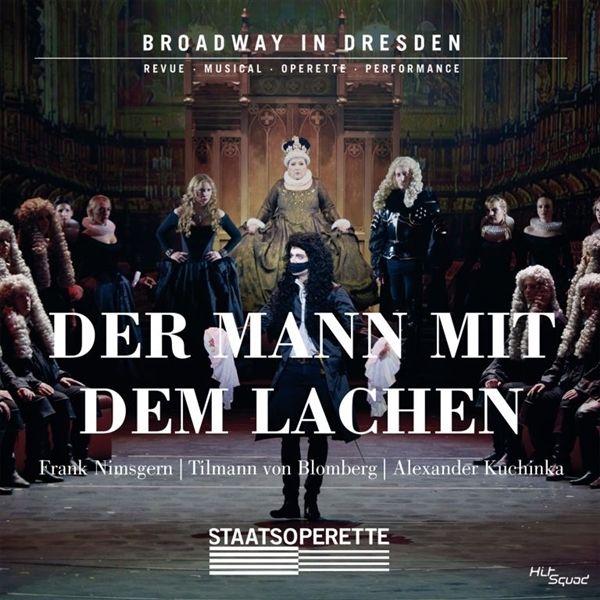
Original Cast Dresden
Der Mann Mit Dem Lachen
England at the beginning of the 18th century is full of intrigue and luxury, privileges and injustices, love and crime - actually the perfect setting for a musical. Victor Hugo must have had a similar opinion - in 1869 he published what came closest to a musical in royal France: a novel that dramatized the very same drama. Lhomme qui rit (the man with the laugh) is made of the stuff that makes good music - a story between dream and reality that plays reality and splendor piece by piece against each other. The focus is on Gwynplaine, a hero who is initially one thing above all: disfigured. His face, distorted into a horrible permanent grin (which would later also scare countless Batman fans) gives the piece its name and a place on various fairs. However, when it turns out that the hero is the son and heir of an honored lord, he finds himself trapped in the gap between rich and poor. Intoxicated by the splendor and weariness of the English aristocracy, he soon realizes that in this strange world, not everything that glitters is gold. Adapted for the musical stage, THE MAN WITH THE LAUGH now turns into a musical epic that further emphasizes the emotionality of the story. The first performance of the Dresden State Operetta brings the English court and its subordinates to life in thirty different major and minor roles, as well as in the in-house choir and in a sixty-piece orchestra. Between lashing sea storms, cruel torture, caricature of the nobility and the pain of the soul of a person rejected by society, everything is described and felt, as depicted in Victor Hugo's novel. In addition to the dialogues by Tilmann von Blomberg, it is Frank Nimsgern's compositions and their interaction with the lyrics of Alexander Kuchinka that emphasize Gwynplaine's role as a walking metaphor. In his representation of the civilian population in the face of the rich and beautiful - an identity that is constantly changing in the eye of the beholder - he becomes the perfect personification of hybrid instrumentation. The result is a mixture of pomp and pop with quotes from the Baroque and tailor-made leitmotifs that carry the juxtaposition of guilt and atonement, ugliness and evil itself. After all, only those who do evil are ugly, as the second act reveals.